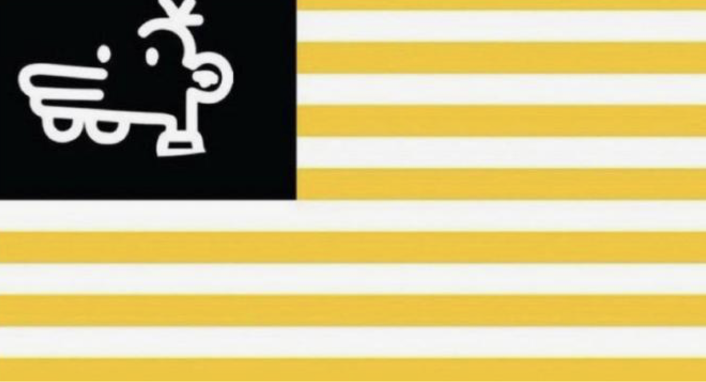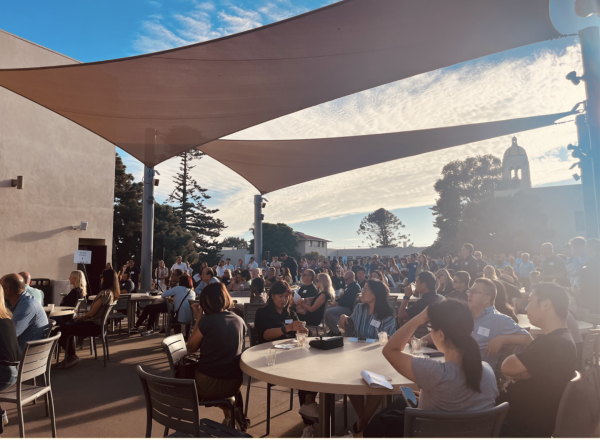The Manny Will Not Be Televised
Generation Z and the value of symbolism
The Manny Flag was, for a time, featured in a potion demanding that it be changed to the new version of the American Flag. Though the petition has since been revealed to be fake, it gained extraordinary traction, garnering nearly one million signatures.
When you think of the Diary of a Wimpy Kid series, a few things might come to mind. Perhaps it is vague childhood memories of blowing through stack after stack of the seemingly innumerable volumes of the franchise. Perhaps it is the image of the emo teenage heartthrob that is the movie version of Rodrick Heffley. Perhaps it is nothing in particular; Diary of a Wimpy Kid was just one of those things you didn’t really grow up with and have had very little reason to ever think about during the course of recent times.
If you find yourself in the latter position—if you find yourself in any position regarding the franchise, really—then the recent cultural resurgence of it might surprise you a little. Because regardless of any previous sentiments you held towards Diary of a Wimpy Kid, it is not a long shot to assume that one of them would likely not be one seeing a character from it become an emblem of the modern-day civil rights movement.
Because that is what has happened. As protests responding to the murder of George Floyd and pervasive police brutality began to break out worldwide in late May, one new tagline skyrocketed in popularity until it had become almost nationally renowned, gaining hundreds of thousands of views across social media platforms from TikTok to Twitter.
This is in reference to, of course, the Manny, or, as it’s more formally known, The Manny Will Not Be Televised. A strange portmanteau of the character Manny Heffley from the Diary of a Wimpy Kid series and the Gil Scott-Heron song/poem “The Revolution Will Not Be Televised,” the Manny has become a pop culture icon in recent months, spreading across the internet like wildfire ever since its creation.
The Manny made its first appearance on June 8 of this year, when TikTok user @themannyspotted posted a video of someone drawing a photo of Manny on the floor in chalk. The video was captioned “THE MANNY WILL NOT BE TELEVISED” and in it, you can hear the cameraman speaking. “Look how pissed off he is,” he said, zooming into the drawing. “Look how mad he is. He’s tired of police brutality.”
Which, since its creation, is the role The Manny has risen to: a symbol combating this very brutality, one meant to stand in solidarity with—and in some cases as a synonym for—the Black Lives Matter (BLM) and All Cops Are B******s (ACAB) movements.
But The Manny’s role within the larger contexts of these movements is not exactly singular, nor is public reception of it.
On one hand, many consider The Manny to hold a certain amount of cultural gravitas. In an article posted to the website Medium, Kristin Merrilees described The Manny as a “symbol of the revolution,” referring to the Black Lives Matter Movement. Further on in the article, Merrilees goes on to state that “the use of ACAB Manny shows how Gen Z often mobilizes the internet, memes, and pop culture for social causes.” And this is certainly true; especially in recent months, it has been Gen Z orchestrating some of the largest-scale responses to current events, such as buying out seats to President Donald Trump’s campaign rally in Tulsa, Oklahoma, or various fandoms banding together to drown out legitimate posts under the #WhiteLivesMatter tags on Instagram.
And the rise of The Manny has had similar impacts. The spread of the symbol has encouraged the spread of information in conjunction with it; signing petitions every time you see a photo of The Manny on your Instagram feed or Twitter timeline has become popularized through social media users like @soupytime on TikTok. @themannyspotted on TikTok—largely accredited as the account that popularized The Manny in the first place—has turned its substantial platform of 57.7k followers into one of sharing information.
But on the other hand, distilling the face of what some such as the New York Times are calling “the largest movement in United States history” into a wholly unrelated cartoon character does not hold the utmost amount of tact or even sense, especially considering the humorous connotations that often go hand-in-hand with The Manny. Though they have since reined in their stance substantially, even the individuals behind @themannyspotted admit to having humorous intent with starting the account, saying plainly in an official statement posted on the 24th of June that The Manny “started as a joke.” “We didn’t expect it to catch on the way it did,” explained Vista, the online name of one of the creators. “The internet moved too fast for us to spread out the initial message behind it.”
When Jeff Kinney, author of the Diary of a Wimpy Kid series was made aware of The Manny and the significance it was beginning to take on, his immediate reaction was one of frustration. “Lots of people are asking me right now how I feel about my character being used as an anti-police symbol. Honestly, I don’t like it,” he said in a since-deleted Twitter thread. “The Black Lives Matter movement needs to be taken seriously. This isn’t helping.” In a later reply, Kinney acknowledged the strides that The Manny—and the propagators behind it, largely members of Gen-Z—had taken, but still expressed concern over the fact that it was “trivializing” the BLM movement.
And this is a completely valid concern, especially when you take into consideration the fact that this has happened in some cases. Petitions to change the American flag to the “Manny Flag” garnered nearly a million signatures while those demanding justice for individuals such as Oluwatoyin Salau lagged far behind their necessary totals. Though the flag change petitions were later revealed to be jokes intending to troll Fox News, the question still remains: if petitions such as that can garner so much popularity, while those demanding legitimate justice for victims struggle to gain traction for weeks upon weeks, are we setting our sights in the right places? Are we assigning the right value to the correct things? Are we trivializing a movement—a necessary, crucial movement—for the sake of marketable, meme-able content on the internet?
The answer might not be clear-cut, but it is an important question to keep in mind, especially when partaking in activism online. Perhaps Vista outlines the crux of the issue best when discussing the developing purpose The Manny serves. “It’s for the movement,” he explained, “not the movement itself.”

Daniel White is a senior and Editor-in-Chief, returning to The Tower for his third year. Aside from spending copious amounts of time getting very stressed...







